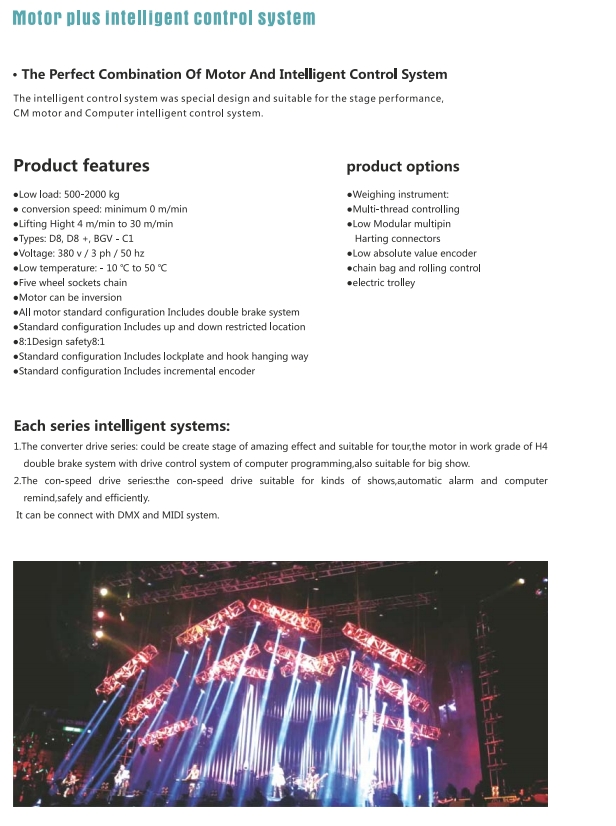 中文版
中文版



Welcome to contact us by phone:0086-0312-7969888
The primary function of a stage electric hoist is to lift and lower heavy objects or equipment on the stage in the entertainment industry. Here are some key functions and purposes of stage electric hoists:
Lifting and Lowering Equipment: Stage electric hoists are designed to lift various items such as lighting fixtures, speakers, scenery, and other production equipment onto and off the stage. This allows for flexible and dynamic changes to the stage setup during live performances.
Precise Positioning: Electric hoists offer precise control over the vertical movement of equipment. This precision is crucial in ensuring that objects are positioned accurately and safely, contributing to the overall quality and safety of the performance.
Automation Integration: Electric hoists can be integrated into stage automation systems, allowing for synchronized and automated movements. This is particularly important for complex productions where coordinated changes in lighting, set pieces, and other elements are required.
Efficiency in Stage Setup: By using electric hoists, stage crews can efficiently move heavy equipment, reducing the manual effort required for setup and facilitating quicker transitions between different scenes or acts.
Safety Features: Many stage electric hoists are equipped with safety features such as limit switches, overload protection, and emergency stop functions to ensure the safe handling of loads and prevent accidents.
Versatility: Electric hoists are versatile and can be used in various applications, adapting to the specific needs of different performances. They can be mounted on grids, trusses, or other structures above the stage.
Overall, the function of a stage electric hoist is to provide a reliable and controlled mechanism for lifting, lowering, and positioning equipment during live events, contributing to the seamless execution of stage productions.



X